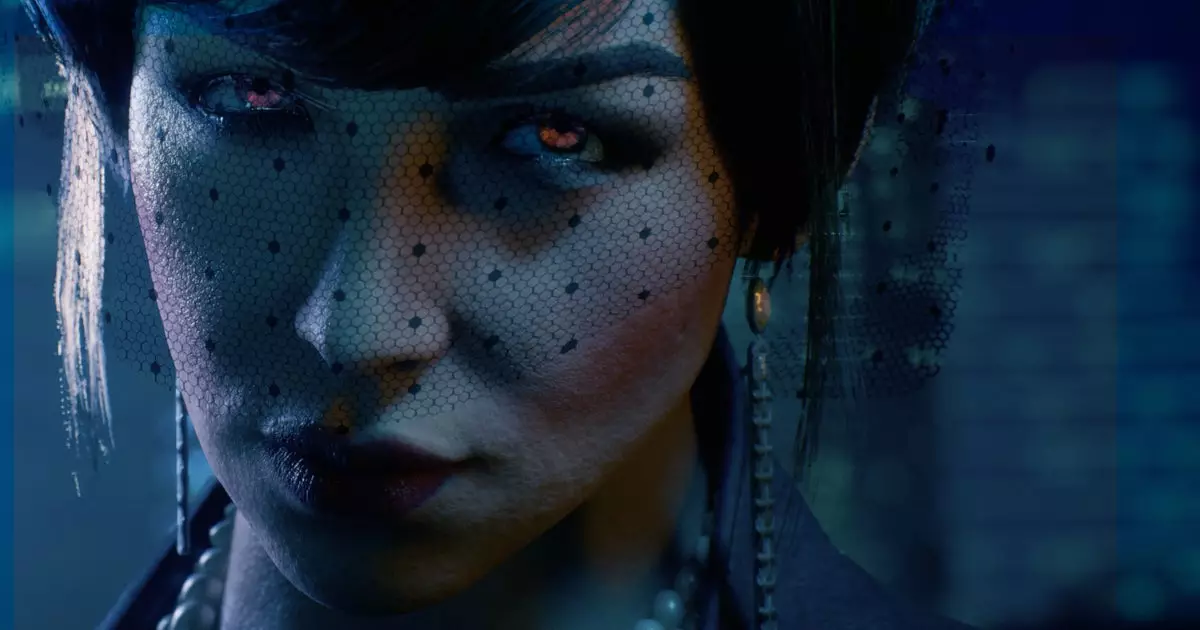Paradox Interactive’s decision to take a different direction with Vampire: The Masquerade – Bloodlines 2 has stirred considerable discussion within the gaming community. The shift from an expansive “open sim” structure, reminiscent of its 2004 predecessor, to a more linear action RPG format, reflects a broader understanding of modern gaming trends and player expectations. Developed by The Chinese Room, a studio noted for its atmospheric storytelling rather than complex gameplay mechanics, Bloodlines 2 seems poised to emphasize narrative-driven experiences over the open-ended exploration that characterized the original game.
Gaming nostalgia often paints older titles in an idealized light, elevating them to mythic status among fans. Mattias Lilja, Paradox’s deputy CEO, acknowledges this phenomenon. The original Bloodlines has indeed been “mythologized,” with many gamers recalling its most impactful moments while glossing over its flaws. By repositioning Bloodlines 2 with a singular focus on the storyline, the developers seem to aim for a thorough understanding among players of what to expect—an action RPG with a more straightforward narrative. This calculated strategy may serve as a prudent approach to meet the current gaming market’s demand for a cohesive storytelling experience.
The tumultuous development history of Bloodlines 2 has led many to wonder about the game’s future. Initially announced in 2019, it faced a series of setbacks, including delays, a complete studio change from Hardsuit Labs to The Chinese Room, and the departure of key personnel such as lead writer Brian Mitsoda. Such challenges place an emphasis on the precarious nature of game development within today’s market, where consumer expectations collide with corporate realities.
Lilja’s recent remarks hint at a ‘quiet confidence’ in the new direction taken by The Chinese Room, which has already shown adeptness in crafting compelling, narrative-rich games. While concerns linger regarding whether this change will satisfy fans of the original Bloodlines, there lies an intrinsic opportunity for The Chinese Room to build on the foundational lore of the World of Darkness and offer a fresh experience distinct from its predecessor. This shift may appeal to both newer gamers and returning fans, allowing for a hybrid approach of addressing nostalgia while innovating within the gameplay structure.
A notable aspect of Lilja’s comments revolves around the necessity of managing expectations. He articulates a desire to clarify the essence of Bloodlines 2 as a “spiritual successor” rather than a direct sequel that replicates the mechanics and open-world design of the original. He stresses the importance of delivering a game that embraces both the atmosphere of the World of Darkness and the narrative intensity that players crave without falling into the traps of nostalgia.
Lilja’s critique of the original Bloodlines points to a broader conversation about how older games are often romanticized, overshadowing their incomplete aspects. In positioning Bloodlines 2 as a self-contained story, the developers could succeed in avoiding the pitfalls of disenchanted fans who expect a carbon copy of a game that may not hold up to modern standards. This kind of transparency is crucial in cultivating trust and setting a realistic bar for what players can anticipate when the game finally releases.
Given Paradox’s recent financial hurdles, there is heightened scrutiny on how Bloodlines 2 will perform commercially. The company has recently faced considerable challenges, marked by a 90% drop in operating profit in the second quarter of 2024, attributed to development delays and substandard releases. Lilja’s statements suggest that the company is shifting its strategy towards more calculated risks in project investments, ideally seeking a balanced approach that allows for creative freedom without compromising financial stability.
While he expresses optimism that Bloodlines 2 will at least break even, Lilja’s acknowledgment of the game’s extensive development and studio changes signals awareness of the inherent risks involved. This cautious outlook is indicative of a broader industry trend where successful hits can be hard to replicate, especially in a gaming environment that increasingly prizes innovative experiences over traditional designs.
Ultimately, the anticipated arrival of Bloodlines 2 embodies a confluence of opportunity and challenge. The Chinese Room’s dedication to crafting a narrative experience is likely to resonate well in an age where player immersion and storytelling reign supreme. In emphasizing a linear narrative structure rather than an open-world emblem, Paradox hopes to both reclaim the legacy of Bloodlines and step into uncharted territory within the World of Darkness.
As we await its release, the hope remains that Bloodlines 2 will not only honor its heritage but also stand as a beacon for future titles within this beloved universe. By prioritizing narrative coherence and emotional engagement, this reformation could deliver a uniquely rich experience that enables players to explore the complexities of vampire lore with fresh eyes. Fingers crossed that the release aligns with high expectations while navigating the treacherous waters of nostalgia, allowing for an enriching journey into the darkened alleys of the World of Darkness.


Leave a Reply